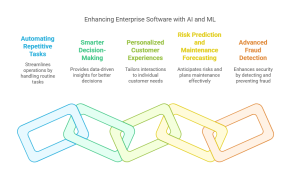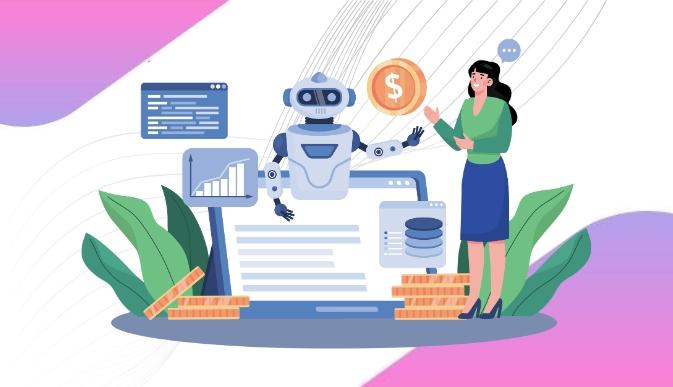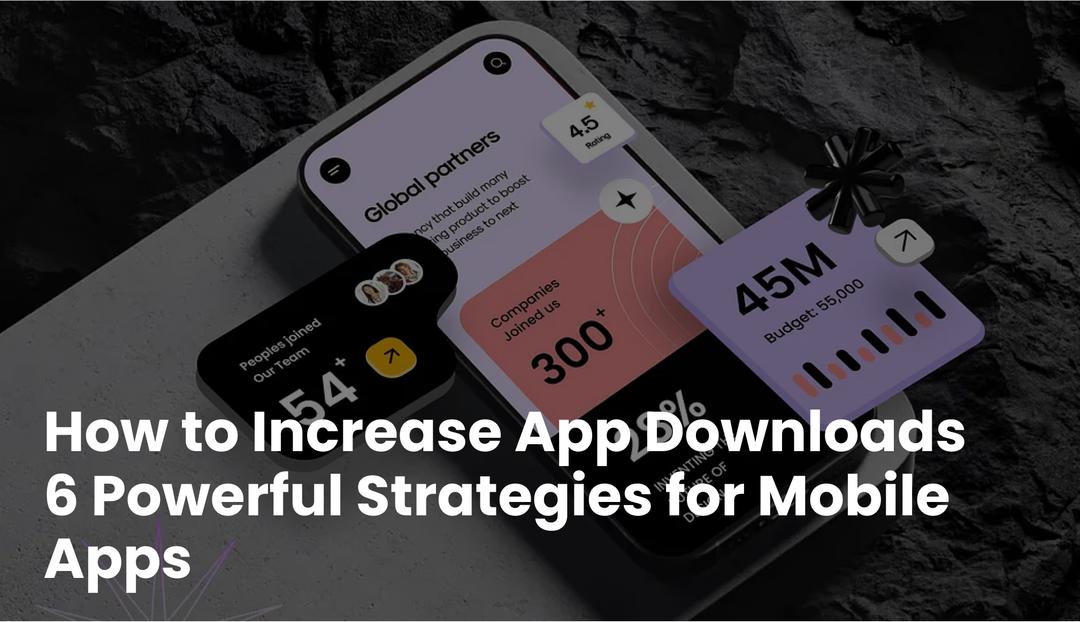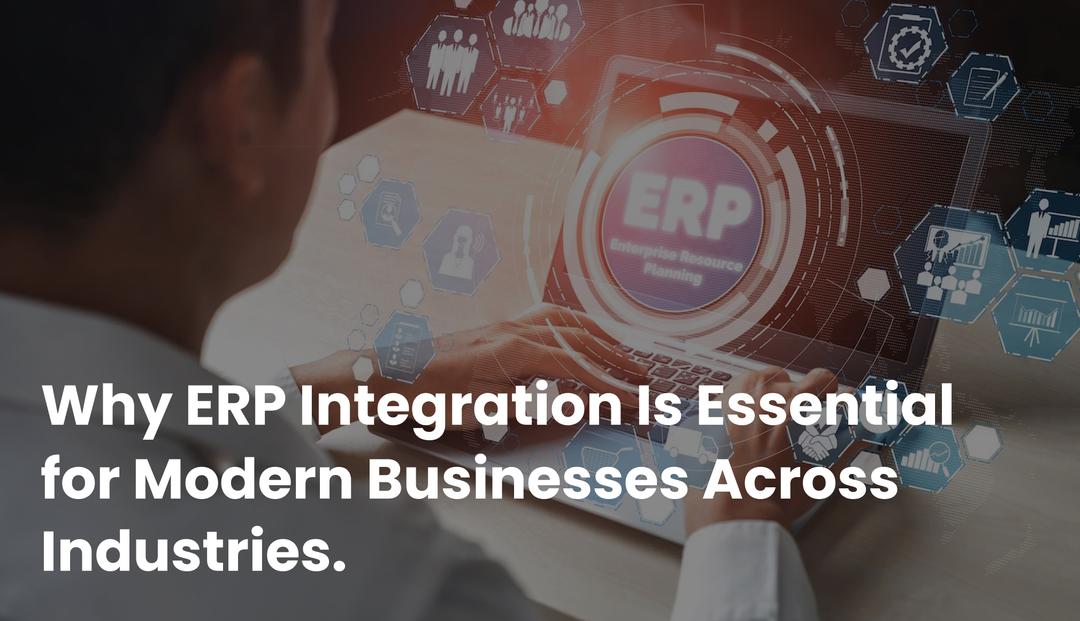AI (Artificial Intelligence) and Machine Learning (ML) are no longer just future technologies, they are powerful tools that businesses are using today to work smarter, improve customer service, and stay ahead of competitors. From automating daily tasks to predicting customer needs, AI and ML are changing the way companies grow and succeed.
But starting an AI project without a clear plan can lead to wasted time, money, and missed opportunities. Successful AI integration needs the right strategy, strong data management, the right tools, and expert support.
At BitsWits, we make it easy for businesses to use AI and ML the right way.
We offer:
- Custom AI solution development to match your business goals
- Machine Learning integration for smarter business decisions
- Data preparation and optimization to power AI tools effectively
- Predictive analytics setup to help you forecast trends and customer behavior
- AI chatbot and automation development to improve customer engagement
- Full AI integration into your existing business systems (ERP, CRM, and more)
In this guide, we’ll show you the key steps to add AI and ML into your enterprise software, with simple explanations, real-world examples, and best practices that help you succeed from the start.
What You Need Before Adding AI and ML to Your Business
Successfully using artificial intelligence (AI) and Machine Learning in your business isn’t just about picking the right software or tools. It’s about preparing your company so that enterprise-level AI applications can actually make a difference, helping you boost revenue, improve customer experience, and stand out in the market.

Here’s what you need to have in place before diving into AI and ML:
1. Understand What AI Can (and Can’t) Do
Before you invest time or money, it’s important to get a clear idea of what AI is capable of. Learn about the common ways businesses use it, what benefits it brings, and what challenges might come up.
Plenty of free and paid resources are available online. Platforms like Coursera, Udemy, Udacity, and LinkedIn Learning offer great beginner-friendly courses on Custom AI software development, machine learning, and predictive analytics that can quickly build your confidence.
2. Check If Your IT Systems Are Ready
AI systems often need strong computing power and storage to work properly. Take a close look at your current technology, your servers, software, cloud setup, and data storage. Can they support AI workloads?
If not, you may need to upgrade. Your systems should be able to run AI tools smoothly, process large volumes of data, and connect with other business applications without major issues.
3. Make Sure You Have Good, Usable Data
Scalable AI solutions are only as good as the data it learns from. That means you need clean, complete, and organized data for the best results.
Start by checking if your data is accurate, up-to-date, and covers all the important areas of your business. You’ll also want to make sure it’s stored in a way that makes it easy to use for training AI models. If your data is spread out across departments, take time to clean it up and bring it all together.
Consider using tools that help manage and organize your data to keep everything consistent and ready for AI use.
4. Review Your Security and Compliance Policies
AI often works with personal or sensitive data, so it’s critical to ensure your systems meet privacy laws and industry regulations.
Industries like healthcare and finance follow strict standards like HIPAA or GDPR. Before launching any AI projects, review your data security policies and make sure they align with these regulations. Update your protocols if needed to avoid legal trouble down the road.
5. Check for the Right Skills in Your Team
Using AI effectively requires a unique set of skills like data science, machine learning, and AI development.
Start by evaluating your team’s current expertise. Do they have the skills to build, train, or manage AI tools? If not, you may need to bring in new talent, partner with AI specialists, or invest in training programs. Online courses, certifications, and workshops are great for building internal capabilities.
6. Plan for Growth and Scalability
Think about how big your AI projects might get. Will your systems need to handle complex tasks like processing images or running predictive models?
If so, your infrastructure needs to scale up as demands grow. Make sure your systems are built to handle heavier AI workloads in the future without slowing down performance or requiring constant upgrades.
Also Read: How AI-Powered Apps Are Transforming Small Business Efficiency
Key Steps to AI & ML Integration

Here are some essential steps to follow when adding AI and ML to your business systems:
1. Review Your Data
Good AI starts with good data. If your data is messy or incomplete, AI won’t work well. Clean, labeled, and structured data helps machine learning models learn better and give accurate results.
2. Choose the Right Tools
Platforms like Google Cloud and Microsoft Azure offer great tools to begin your AI journey. Many businesses start with simple features, like chatbots to automate customer service and build from there.
3. Pick the Best ML Model
Not every problem needs fancy AI. In many cases, simple models like classification (sorting things into categories) or regression (predicting trends) are enough. For example, you can use AI to sort customer emails or forecast product demand.
4. Think Long-Term
AI is not a quick fix, it’s a journey. Training good ML models takes time and investment. Be upfront with your team about what to expect. If done right, the long-term rewards will far outweigh the effort you put in.
Common Use Cases for AI in Businesses
AI can be used in many ways. Here are a few practical examples:
Chatbots for customer support: Available 24/7 and can handle multiple queries at once.
Predictive analytics: Forecast customer behavior, inventory needs, or market trends.
Fraud detection: AI can find unusual patterns in large datasets that humans might miss.
Personalized experiences: Show customers the right products or services based on their behavior.
How AI and ML Improve Enterprise Software
Artificial Intelligence (AI) and Machine Learning (ML) are transforming enterprise AI Integration software from static systems into dynamic tools that adapt, learn, and grow with your business. By integrating these technologies, companies can unlock powerful capabilities that enhance productivity, reduce costs, and deliver better user experiences.

Here are the key ways AI and ML elevate enterprise software:
1. Automating Repetitive Tasks
AI can handle routine, time-consuming tasks like data entry, invoice processing, and report generation, freeing up your team to focus on higher-value work.
Example:
In HR software, AI can automatically screen resumes and shortlist candidates based on predefined criteria, saving recruiters hours of manual work.
Impact:
- Boosts operational efficiency
- Reduces human error
- Cuts labor costs on repetitive jobs
2. Smarter Decision-Making Through Data Insights
ML algorithms can analyze massive volumes of business data, faster and more accurately than any human. These insights help leaders make informed decisions backed by real-time trends and predictive analytics.
Example:
In sales platforms, AI can forecast demand, suggest pricing strategies, or identify high-value leads by analyzing historical data and customer behavior.
Impact:
- Increases accuracy in strategic planning
- Enables proactive decision-making
- Improves responsiveness to market changes
3. Personalized Customer Experiences
AI-powered systems can track user behavior and preferences to deliver hyper-personalized experiences, from content recommendations to custom pricing or targeted marketing.
Example:
In e-commerce platforms, AI tailors product recommendations for each user based on browsing history, previous purchases, and customer profiles.
Impact:
- Increases customer satisfaction and engagement
- Boosts conversions and sales
- Strengthens brand loyalty through personalization
4. Risk Prediction and Maintenance Forecasting
ML models can predict when something is likely to go wrong whether it’s a piece of equipment that needs maintenance or a financial risk on the horizon. This predictive ability helps businesses stay one step ahead.
Example:
In manufacturing software, predictive maintenance uses sensor data and ML to forecast equipment failures, helping companies avoid costly downtimes.
Impact:
- Minimizes operational disruptions
- Saves on emergency repair costs
- Improves asset longevity and ROI
5. Advanced Fraud Detection and Enhanced Security
AI can spot suspicious behavior patterns that deviate from the norm, helping flag potential fraud or security breaches in real time.
Example:
In banking or financial systems, AI can detect anomalies in transaction data like unusual login locations or purchase patterns, and trigger instant alerts.
Impact:
- Strengthens cybersecurity defenses
- Reduces financial loss due to fraud
- Ensures regulatory compliance
One of the biggest strengths of AI and Machine Learning is their ability to get better over time. As the system handles more data, it keeps learning, improving its predictions, suggestions, and automation skills. However, in customer support platforms, AI-powered chatbots become smarter and faster by learning from past conversations. This leads to more accurate responses, better customer experiences, and less need for manual updates or adjustments. Over time, AI systems naturally adapt to changing user needs, making your business smarter and more efficient without extra work.
Types of AI Technologies and How They Fit into Existing Applications

To make AI work well, you need to understand the main types of technology involved:
1. Machine Learning (ML)
Machine learning for business helps systems learn from data and get better over time. It includes:
Supervised Learning: Trains on labeled data (great for spam detection or classifying emails).
Unsupervised Learning: Finds hidden patterns in unlabeled data (used in customer segmentation).
Reinforcement Learning: Learns through rewards and penalties (great for dynamic environments).
2. Deep Learning
This is an advanced form of ML that mimics how the brain works. It’s used in things like voice assistants, self-driving cars, and medical image analysis.
3. Natural Language Processing (NLP)
NLP allows computers to understand human language. It powers tools like chatbots, voice recognition, and sentiment analysis to gauge how customers feel.
4. Computer Vision
This helps software “see” by analyzing images or video. It’s used in agriculture, document scanning, facial recognition, and more.
5. Robotic Process Automation (RPA)
RPA uses bots to handle repetitive tasks like data entry, invoice processing, or form filling, quickly and with fewer errors.
Challenges to Consider Before Using AI
AI is powerful, but it’s not a magic fix for every problem. Some business issues are too complex or don’t have enough data to work well with AI. That’s why it’s important to ask yourself: Is this something AI can actually solve?
AI needs a lot of clean, organized data to work properly. If your data is messy, incomplete, or limited, the results won’t be useful. Also, training AI takes time, resources, and the right skills, so it’s not always quick or simple.
Not every problem needs AI. Sometimes, human experience and common sense are better. Rushing into AI without a clear goal can lead to wasted time and money.
Take time to think it through. If the problem is a good fit and you have the right setup, AI can be a game-changer. If not, it’s better to wait or explore other options.
Ready to Bring AI and Machine Learning Into Your Business?
Integrating AI and machine learning isn’t just a trend, it’s the smartest move you can make to future-proof your enterprise. Whether you want to automate processes, make faster decisions, or create better customer experiences, AI can help you get there faster and smarter.
At BitsWits, we specialize in helping businesses like yours integrate AI and ML the right way, simple, scalable, and customized for your goals. Let’s build smarter systems that grow with you.
Start your AI journey today
Supercharge your business with smart, scalable AI — With BitsWits.
Contact Our Experts
Wrapping Up:
AI and machine learning aren’t just tech buzzwords anymore, they’re real game-changers for businesses. From automating those time-consuming tasks to helping you uncover smart insights hidden in your data, AI and ML are transforming how enterprise software works. They make it easier to personalize the customer experience, improve security, and make faster, more informed decisions across the board.
If you’re looking to scale up, streamline operations, or simply stay ahead in a fast-moving market, bringing AI and ML into your systems is a smart, future-ready move. These technologies don’t just solve problems, they grow with you, helping your software get better and more intuitive over time.
It’s time to leave behind outdated tools and step into a more intelligent, efficient way of working, one that’s built to adapt and evolve with your business.
FAQs












